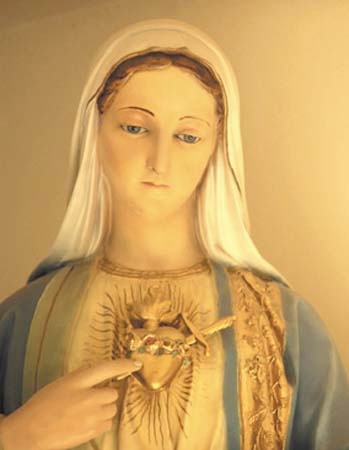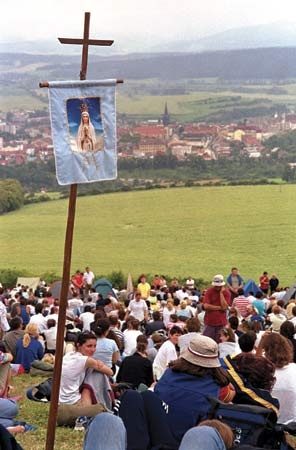Mariology
theology
 in Christian, especially Roman Catholic, theology, the study of doctrines concerning Mary, the mother of Jesus; the term also refers to the content of these doctrines.
in Christian, especially Roman Catholic, theology, the study of doctrines concerning Mary, the mother of Jesus; the term also refers to the content of these doctrines. The primary methodological problem of Mariology lies in the very limited mention of Mary made in the New Testament and in the relative, although not complete, silence about Mary in the early church. Although Mary is mentioned in some early apocryphal (noncanonical) writings and baptismal creeds, theological disputes were the most significant factor in bringing Mary to theological prominence. At various times, it was denied both that Jesus was authentically human and that he was fully divine. To the first charge, the assertion that he had a human mother was considered a convincing refutation; with regard to the second, the affirmation by the Council of Ephesus (Ephesus, councils of) (431) that Mary was Theotokos became the principle upon which devotion to Mary in the East has primarily rested. In both Eastern and Western liturgical traditions, various feast days in her honour were established.
The primary methodological problem of Mariology lies in the very limited mention of Mary made in the New Testament and in the relative, although not complete, silence about Mary in the early church. Although Mary is mentioned in some early apocryphal (noncanonical) writings and baptismal creeds, theological disputes were the most significant factor in bringing Mary to theological prominence. At various times, it was denied both that Jesus was authentically human and that he was fully divine. To the first charge, the assertion that he had a human mother was considered a convincing refutation; with regard to the second, the affirmation by the Council of Ephesus (Ephesus, councils of) (431) that Mary was Theotokos became the principle upon which devotion to Mary in the East has primarily rested. In both Eastern and Western liturgical traditions, various feast days in her honour were established.The tradition that she remained a virgin though she gave birth to Jesus was generally accepted in the early church. A further appreciation of her holiness led to the doctrine that she was so favoured by God's grace that she could not have sinned and, in the view of some theologians, that she was even free from the effect of the disobedience of Adam. The latter doctrine, known as the Immaculate Conception, was formally proclaimed a matter of Roman Catholic belief by Pope Pius IX in 1854. The association of Mary in the work of Jesus developed into the view of Mary as everyone's spiritual mother and as co-redemptrix—i.e., the partner with Jesus in the redemption (salvation) of human beings. Her role in redemption was extended to her intercession in heaven and to the application of Christ's merits to individual persons. The doctrine that after death Mary's body was assumed into heaven (Assumption) was proclaimed by Pope Pius XII in 1950.
Post-Reformation Roman Catholic Mariology has generally been characterized by a sensitivity to Protestant criticisms. Popular piety was reflected in the establishment of lay groups and communities of priests or nuns devoted to Mary and the building of shrines at places (such as Lourdes in France and Fátima in Portugal) where Mary was said to have appeared. In the 20th century the teachings of several successive popes encouraged numerous pilgrimages in her honour and congresses devoted to her.
- Eiffel Tower
- Eigen, Manfred
- eigenvalue
- eight ball
- Eight Eccentrics of Yangzhou
- eighteen schools
- Eightfold Path
- Eightfold Way
- Eight, Group of
- Eighth Route Army
- Eight Masters of Nanjing
- Eight Saints, War of the
- Eight, The
- Eighty Mile Beach
- Eighty Years' War
- Eijkman, Christiaan
- Eileen Collins
- Eileen Farrell
- Eileithyia
- Eilhardt Mitscherlich
- Eilhart Von Oberg
- Eimeria
- Einar Benediktsson
- Einar Gerhardsen
- Einar Hjörleifsson Kvaran